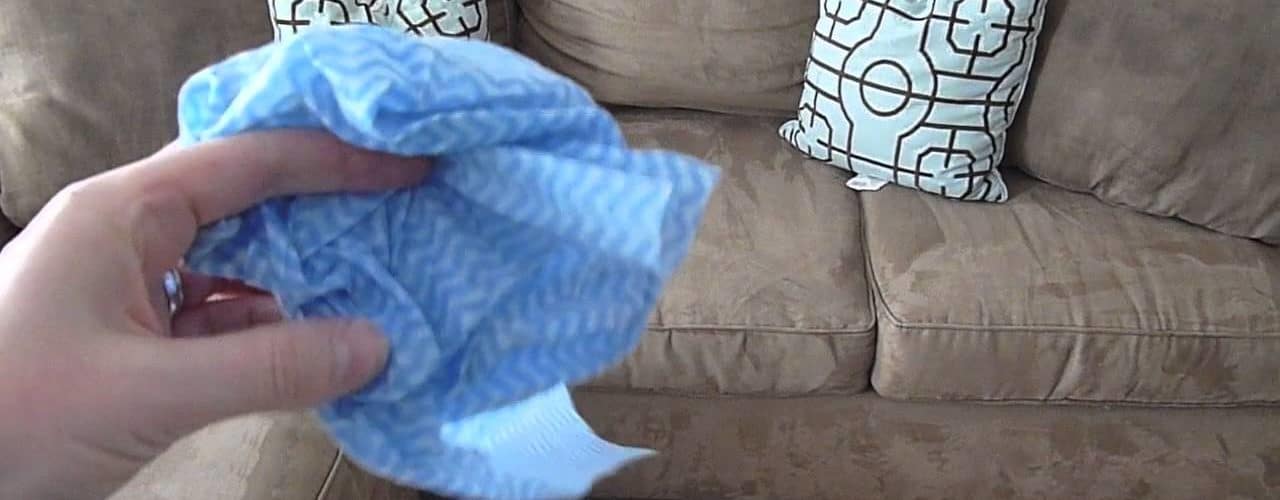Too many consumers are quick to start looking for a replacement couch when there is plenty of life left in the one that they already have, and the results that an effective cleaning can deliver are impressive. Many individuals are reluctant to spend the money on having their existing couch reupholstered or covered. The good news, however, is that it isn’t difficult to clean a couch. In fact, it’s not even necessary to hire a professional to perform the cleaning as any individual can perform the task by following this guide.
Before attempting to clean the couch, it is necessary to consider what types of stains are present on the surface. Multiple chemical products are available on the market today, but the method of cleaning is going to depend on what needs to be removed. It is important to note that many of the cleaners are fairly abrasive and could very easily damage the couch if the directions are not followed. Once a consumer has been able to determine what challenges the cleaning may include, all of the materials needed should be gathered.
Contents
Supplies Needed To Clean A Couch Include:
– Vacuum Cleaner
– Portable Carpet Cleaner (If Available)
– Wet / Dry Vacuum (If Portable Carpet Cleaner is Not Available)
– Brush with Medium Bristles
– Goo Gone (If Any Gum or Sticky Substances are Present)
– Carpet Cleaning Chemicals (Any Brand Will Work)
– Leather / Vinyl Cleaner
– Club Soda (If Red or Wine Stains are Present)
– Absorbent Terry Cloth
– Microfiber Finishing Towel
After all of the supplies have been gathered, the next step is to free the couch of any loose debris. The cushions should be removed if possible, and all of the crevices should be vacuumed. It can be helpful to turn the couch over and vacuum the underside as well. If the couch is a sleeper, the bed part should obviously be drawn out and vacuumed as well. Once there is no loose dirt, the cleaning method is going to depend on the surface of the couch. For any couches that may contain more than one type of surface, refer to the specific section for cleaning instructions for that portion.
Leather / Vinyl Couches
Although leather can be more easily damaged than fabric surfaces, they are actually much easier to clean. The most important thing to remember is that the leather must remain as dry as possible to prevent staining. Only cleaners that are specifically for leather should be used on a genuine leather couch. A portable carpet cleaner should not be used, nor should a wet / dry vacuum be necessary. An absorbent terry cloth will be acceptable for applying the leather cleaner, and it should be followed by polishing the surface with a microfiber finishing towel.
Microfiber Couches
The microfiber surface is often treated with a stain blocker, so it shouldn’t be too difficult to clean. Goo Gone will work for any stuck on gum or other sticky material, but it should be used in moderation and tested on a small portion for color fastness. The most important thing to remember when dealing with a microfiber surface is that as little water as possible should be used. Portable carpet cleaners that steam the surface are going to be better than ones that rely on hot water and suction. Most carpet cleaners will be completely safe, but specific instructions on the bottle should be followed when in doubt.
Cloth / Fabric Couches
Traditional couches that consist of cloth or fabric are the most likely to become stained, but they can be cleaned very aggressively without any resulting damage. A carpet cleaner should be used if it is available, but carpet cleaner can also be worked into the surface with a medium bristle brush. The foam should be sucked up with a wet / dry vacuum and the surface allowed to dry. If the desired results aren’t achieved the first time, the process can be repeated.



